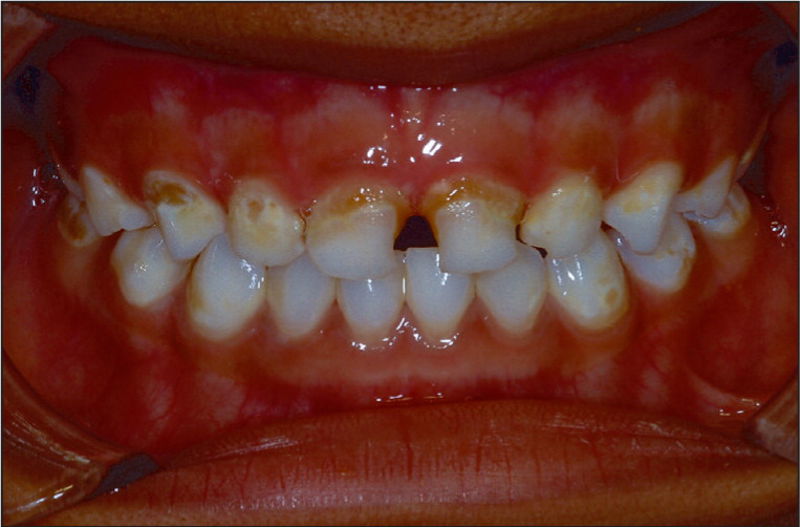Expand all
Collapse all
Overview
A child's oral health is recognised as being a contributing factor to their healthy development. The World Health Organisation (WHO) defines oral health as being free from chronic mouth and facial pain, cancers, infection and other conditions that may inhibit a person's ability to chew, bite, smile or speak (WHO, 2018). Oral health problems include gum disease, tooth decay (Figure 1), tooth loss and other oral mucosal diseases.

Tooth decay is the most common oral disease affecting children and young people in England and is considered to be mostly preventable (Public Health England, 2016a). It is considered to be a public health priority linked to childhood obesity and is also connected to factors such as
To view the rest of this content login below; or read sample articles.
Resources
References
Department of Health. Healthy child programme: from 5-19 years old. 2009. https://www.gov.uk/government/publications/healthy-child-programme-5-to-19-years-old (accessed 19 December 2022)
Godson J, Csikar J, White S. Oral health of children in England: a call to action! Arch Dis Child. 2018;103(1):5–10. https://doi.org/10.1136/archdischild-2017-312725
Health and Social Care Information Centre. Hospital episode statistics (archived). 2015. https://digital.nhs.uk/data-and-information/publications/statistical/hospital-admitted-patient-care-activity/hospital-episode-statistics-admitted-patient-care-england-2013-14#:~:text=In%202013%2D14%3A&text=Of%20these%20episodes%2C%2011.8%20million,involving%20a%20procedure%20or%20intervention. (accessed 19 December 2022)
National Institute for Health and Care Excellence. Oral health: local authorities and partners. Public health guideline PH55. 2014. https://www.nice.org.uk/guidance/ph55 (accessed 19 December 2022)
NHS England. Making every contact count: consensus statement. 2016. https://www.england.nhs.uk/wp-content/uploads/2016/04/making-every-contact-count.pdf (accessed 19 December 2022)
Oge OA, Douglas GVA, Seymour D et al. Knowledge, attitude and practice among Health Visitors in the United Kingdom toward children's oral health. Public Health Nurs. 2018;35(1):70–77. https://doi.org/10.1111/phn.12381
Public Health England. Delivering better oral health: an evidence-based toolkit for prevention. Chapter 2: Summary guidance tables for dental teams. 2014. https://www.gov.uk/government/publications/delivering-better-oral-health-an-evidence-based-toolkit-for-prevention/chapter-2-summary-guidance-tables-for-dental-teams (accessed 19 November 2022)
Public Health England. Local authorities improving oral health: commissioning better oral health for children and young people. An evidence-informed toolkit for local authorities. 2014b. https://assets.publishing.service.gov.uk/government/uploads/system/uploads/attachment_data/file/321503/CBOHMaindocumentJUNE2014.pdf (accessed 19 December 2022)
To view the rest of this content login below; or read sample articles.